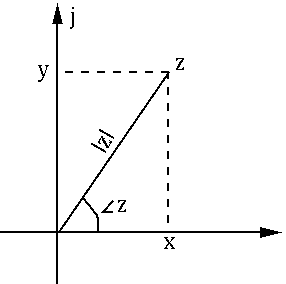Next: Appendix Up: Chapter 3: AC Circuit Previous: Summary
A complex number can be represented in two different formats in either the Euclidean and polar coordinate system:









The two representations can be converted from one to the other:
 to
to
 :
:
 |
(463) |
 to
to  :
:
 |
(464) |
 |
(465) |
The arithmetic operations of two complex numbers


 |
(466) |
 |
(467) |
 |
(468) |
When a complex number, a vector in complex plane,









In particular, As





The complex conjugate of








 |
(469) |
 |
(470) |